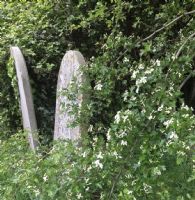

|
|
|
Hawthorn (Crataegus Monogyna) Hawthorn (Crataegus Monogyna) Date added: 30/04/2020 15:55:22 When the Hawthorn or May Tree comes into flower we know that we are getting closer to summer but we may do well to take note of Thomas Fuller’s warning from 1732: “Ne’er cast a clout, till May be out” advice which means don’t change from winter to summer clothes till June as there is often a sudden cold snap in May! In the wild, this is a tree or shrub with thorny branches and lobed or toothed leaves. The thorns are modified branches and they may sometimes bear leaves. The creamy white blossom is borne in clusters with each individual flower having five petals, followed in autumn by the fruit which consists of a single seed in a dark red berry referred to as a “haw”. Plentiful berries are said to forecast a hard winter; however, these are really the result of favourable conditions in the spring and the activity of insects searching for nectar who cross - pollinated the flowers to enable them to set seed. In the past, country folk would eat the early fresh green shoots which were known as “bread and cheese” and perhaps these supplied food nutrients which may have been missing from their winter diet when fresh produce was much less available than it is today. Many customs, superstitions and myths are associated with the May Tree. There is a legend about the famous Glastonbury Thorn (a variety which flowers in both winter and early summer). Mediaeval accounts claim that the original tree sprang from the Staff of Joseph of Arimathea who planted it at the Glastonbury Abbey site when he visited with his followers spreading the gospel of Christianity. Maypole dancing survived Christianity though it has lost whatever original meaning it may have had but the tradition is still continued today. For over 500 years, May Morning in Oxford has been celebrated by the Magdalen College Choir’s singing of a hymn from the top of the college tower at 6 am. This is followed by revelry and general festivities including Morris Dancing in Radcliffe Square. © FNRC
Images related to this news article |
Website designed and maintained by Paul Thompson on behalf of the Friends of Newtown Road Cemetery.

